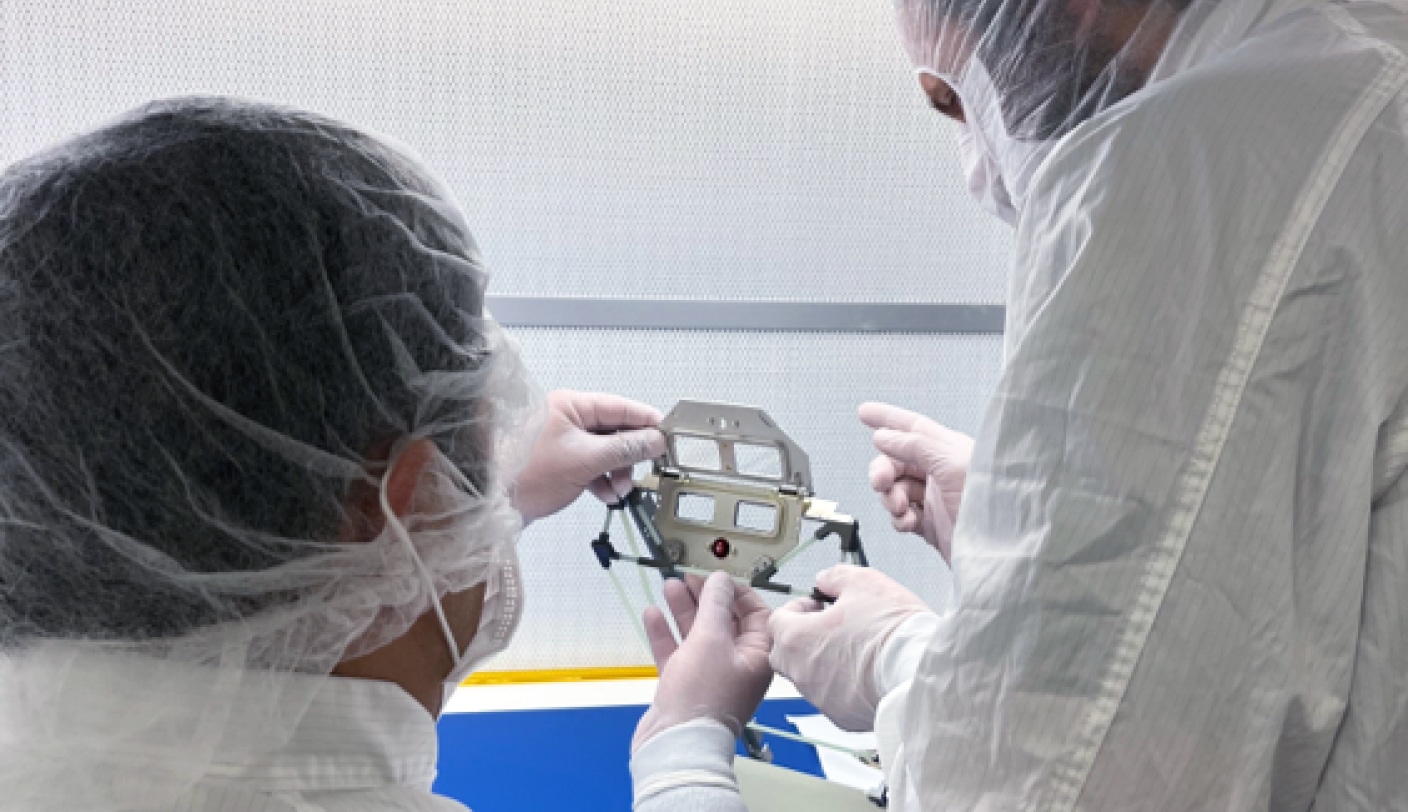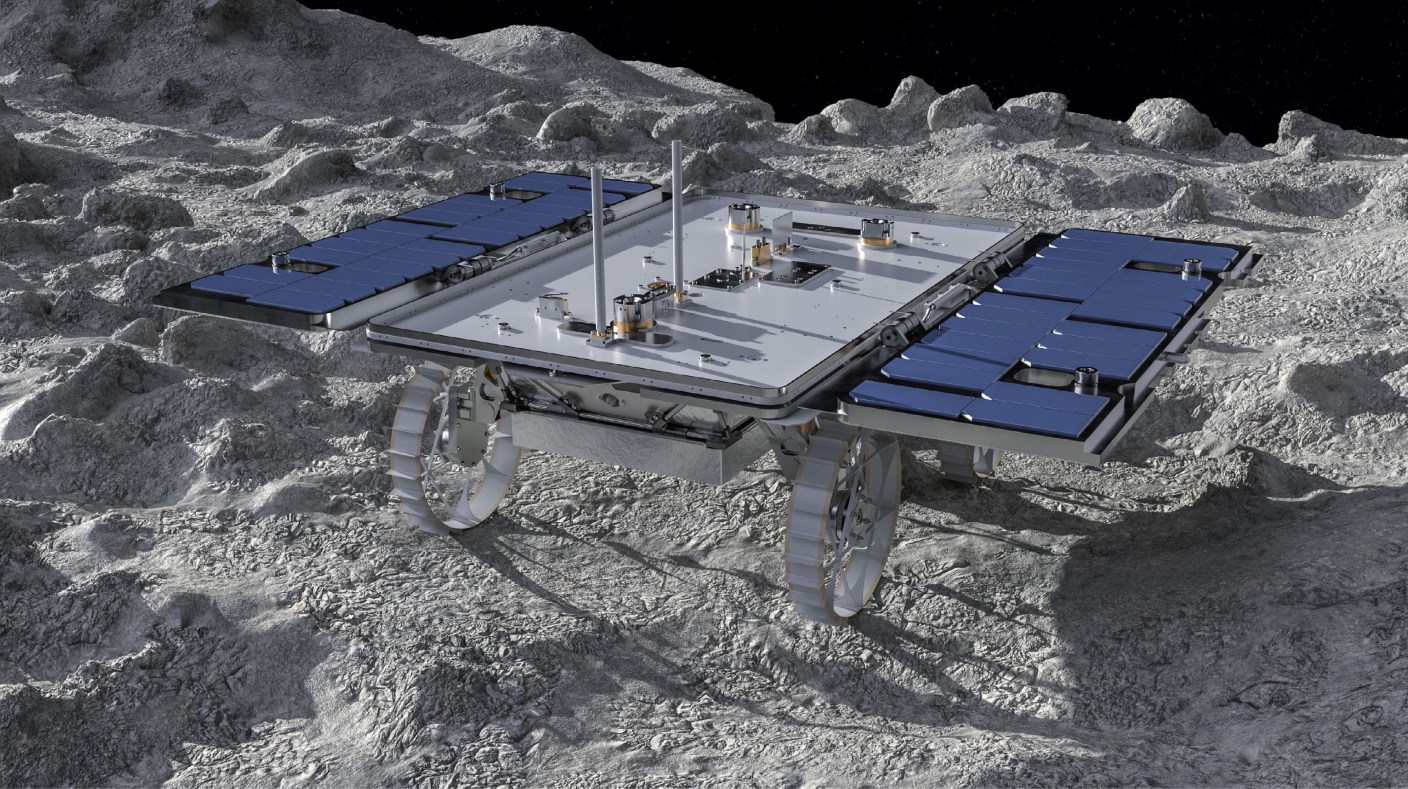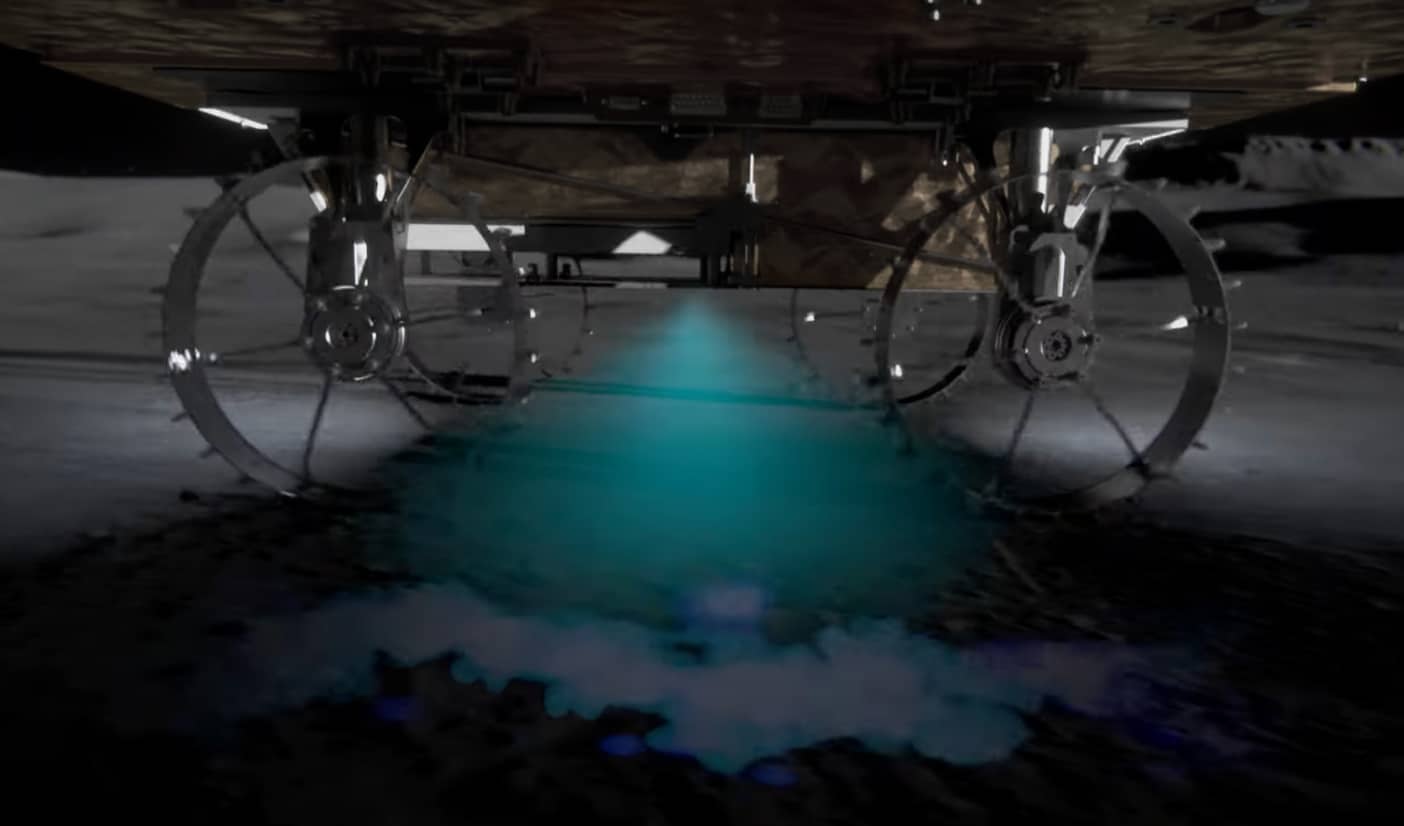
Project Stats
Client:
NASA Jet Propulsion Laboratory
Status:
In Progress
- Schedule for launch in 2024
Project Overview:
Motion control, mobility, chassis and mechanism systems for trio of lunar rovers and associated deployer and base station.
JPL’s Cooperative Autonomous Distributed Robotic Exploration (CADRE) mission, scheduled to be launched to the Moon in 2024, will demonstrate the use of a networked trio of robotic rovers, each about the size of a carry-on luggage bag, to autonomously map a region of the lunar subsurface. To facilitate the mission, Motiv collaborated with the JPL team to define and implement the robotic configuration of the vehicle. In particular, Motiv developed and delivered the electro-mechanical motion control content relative to the lander deployment system, mobility system, numerous instrument and power generation system deployments, as well as a novel lightweight rover chassis.
During the mission, the three rovers will autonomously locate themselves away from the base station and spend a lunar day (14 Earth days) using ground-penetrating radar to build a 3D map of their specific area. The rovers will communicate with one another and with Earth through the base station, via a mesh network, all without input from controllers on Earth.
This autonomous robotic exploration will pave the way for future missions in which robotic hardware systems and mechanisms developed by Motiv can free astronauts on the Moon or Mars to focus on other tasks without needing to control their robotic counterparts.
Mission Overview
The CADRE mission will demonstrate the use of an autonomous distributed network of rovers on the surface of the Moon. During the mission, which is being developed and overseen by NASA’s Jet Propulsion Laboratory in Pasadena, California, three small rovers will be deployed from a base station in the Reiner Gamma region of the Moon. These rovers will autonomously move away from one another and spend a lunar day (14 Earth days) mapping the subsurface in 3D using ground-penetrating radar. The entire mission will be carried out without the intervention of human controllers on Earth, with the three rovers communicating with one another and the base station through a mesh network.

Motiv’s Role
Motiv has been working closely with JPL for more than two years on the CADRE program. Motiv was instrumental in developing the system architecture of the rover vehicles, rover deployment system and lander mounted base station. Motiv further evolved conceptual designs of these systems for the mission, eventually culminating in final flight designs and deliverables for the program. This included rover motor control boards and mobility actuators, rover enclosure structure and deployment mechanisms, full system deployer mechanism assemblies, as well as base station structural components.
Motor Controllers
Motiv’s expertise in motor controllers has been utilized for the development of custom motion control avionics for the rovers, helping ensure their autonomous operation over the 14-day mission. The motor controller will be employed to actuate the various rover mechanisms and the deployment system developed by Motiv.


Mechanisms
For CADRE, Motiv continues to build on a relationship with NASA to develop flight mechanisms necessary for mission success. The rover mechanisms include the camera cover, solar panel hinges, and mobility actuators. To facilitate rover deployment. Motiv developed the lander interfaces and a tether spool assembly.
An Autonomous Robotic Future
In the future, autonomous robotic systems will play a critical role in advancing space exploration. Individual robots or integrated robotic networks, such as the one demonstrated with the CADRE mission, will provide valuable research and engineering capabilities, while allowing astronauts to carry out other tasks on the lunar surface or Mars. Utilizing Motiv’s advanced robotic capabilities and controls, NASA’s JPL is taking the first step in enabling this autonomous robotic future.